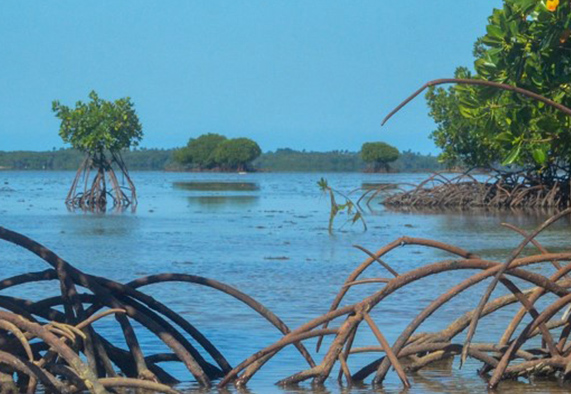Research aims and methods
While mangroves usually grow and develop on soft-bottom sediments, some trees have been able to settle on consolidated sediment on a backreef system in Laucala Bay, south of Suva in Fiji.
The atypical occurrence of mangrove trees on a backreef located relatively distant from the shore, provides the perfect natural setting to study the changes in physical and chemical attributes and processes that follow mangrove establishment, together with their effect on the associated fauna.
The Reef TREES project combines field surveys and experiments to quantify the extent to which mangrove trees a) attenuate water motion and enhance sediment deposition, b) modify physico-chemical properties of the sediment (e.g. organic matter content, grain size), c) affect microbial metabolic activity, and d) function as refugia for solitary or schooling fish. Using additional mimic trees, we also test whether these effects are linked to the trees’ physical structure alone, or to other characteristics.
Preliminary results and expected outcomes
A total of 120 mangrove trees were encountered on the studied backreef, of which 24 were surveyed. In this shallow environment with otherwise low topographic complexity, the trees are expected to act as strong ecosystem engineers. We hypothesise that they will attenuate water motion and favour sediment deposition within their proximity.
First results show that tree roots attracted large fish aggregations at incoming and high tides, and served as sleeping refugia for sea snakes. Mangroves thus provided landscape features with functions otherwise scarce on this back reef.
Not only will Reef TREES provide valuable insights directly applicable to mangrove rehabilitation efforts and ecosystem design, but will also reveal novel connections between mangrove and coral reefs.
Project Partner |
International Project Partner | |
|---|---|---|
|
Hannah von Hammerstein Theresa Fett Dr. Sebastian Ferse (Future Earth Coasts) Prof. Dr. Martin Zimmer (WG Mangrove Ecology) |
Professor Stuart Kininmonth (University of the South Pacific) |





